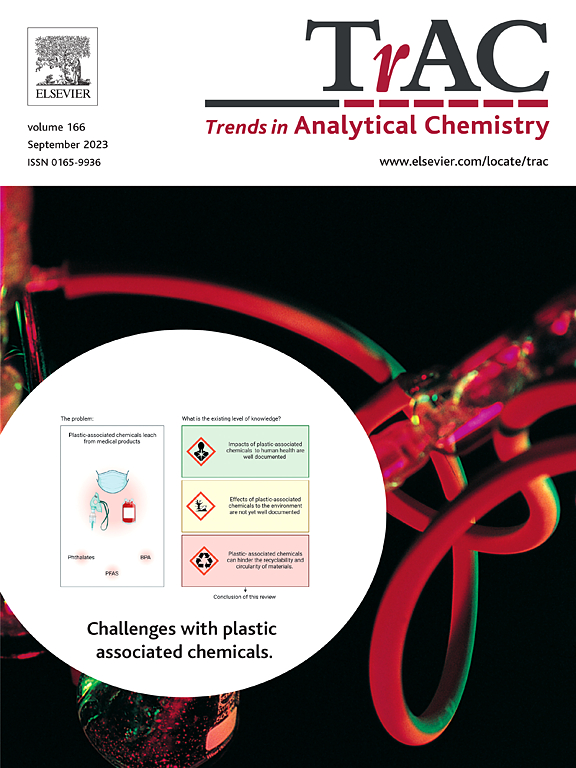Innovative and cutting-edge approaches in microfluidic paper-based analytical devices for detection of food adulteration
IF 11.8
1区 化学
Q1 CHEMISTRY, ANALYTICAL
引用次数: 0
Abstract
Food adulterants are substances added to food products to improve their weight and appearance and reduce costs. However, the use of these substances deteriorates the quality of food products and results in a decrease in nutritional value. For this reason, situations that negatively affect the health of consumers occur. Microfluidic paper-based analytical devices (μPADs) have gained popularity as miniaturized, portable, highly sensitive, accurate, and affordable detection platforms. μPADs are preferred as advantageous platforms for the determination of food adulterants in foods, thanks to their on-site analysis and simultaneous determination of multiple analytes features. Therefore, μPADs provide fast and reliable results in food safety. In this review, the selection of paper and method for the fabrication of μPADs, as well as the determination of the signal readout mode, are briefly mentioned. In addition, the sample preparation process before the use of PADs is also mentioned. The most current applications of μPADs in determining food adulteration are applied sample, method, linear range, LOD, etc., evaluated in terms of parameters. This review also sheds light on commercial practices by discussing the most prominent studies in the last three years.
用于检测食品掺假的微流控纸质分析装置的创新和前沿方法
食品掺假剂是添加到食品中的物质,目的是改善食品的重量和外观,降低成本。然而,这些物质的使用会降低食品的质量和营养价值。因此,出现了对消费者健康产生负面影响的情况。微流控纸质分析装置(μPADs)作为微型化、便携式、高灵敏度、高准确度和经济实惠的检测平台,在检测食品中的食品掺假物方面具有优势,是首选的检测平台,这得益于其现场分析和同时检测多种分析物的特点。因此,μPAD 可为食品安全提供快速、可靠的检测结果。在这篇综述中,简要介绍了μPAD 的纸张选择、制作方法以及信号读出模式的确定。此外,还提到了使用 PAD 之前的样品制备过程。目前,μPAD 在确定食品掺假方面的最新应用包括应用样品、方法、线性范围、LOD 等参数评估。本综述还通过讨论近三年来最突出的研究揭示了商业实践。
本文章由计算机程序翻译,如有差异,请以英文原文为准。
求助全文
约1分钟内获得全文
求助全文
来源期刊

Trends in Analytical Chemistry
化学-分析化学
CiteScore
20.00
自引率
4.60%
发文量
257
审稿时长
3.4 months
期刊介绍:
TrAC publishes succinct and critical overviews of recent advancements in analytical chemistry, designed to assist analytical chemists and other users of analytical techniques. These reviews offer excellent, up-to-date, and timely coverage of various topics within analytical chemistry. Encompassing areas such as analytical instrumentation, biomedical analysis, biomolecular analysis, biosensors, chemical analysis, chemometrics, clinical chemistry, drug discovery, environmental analysis and monitoring, food analysis, forensic science, laboratory automation, materials science, metabolomics, pesticide-residue analysis, pharmaceutical analysis, proteomics, surface science, and water analysis and monitoring, these critical reviews provide comprehensive insights for practitioners in the field.
 求助内容:
求助内容: 应助结果提醒方式:
应助结果提醒方式:


